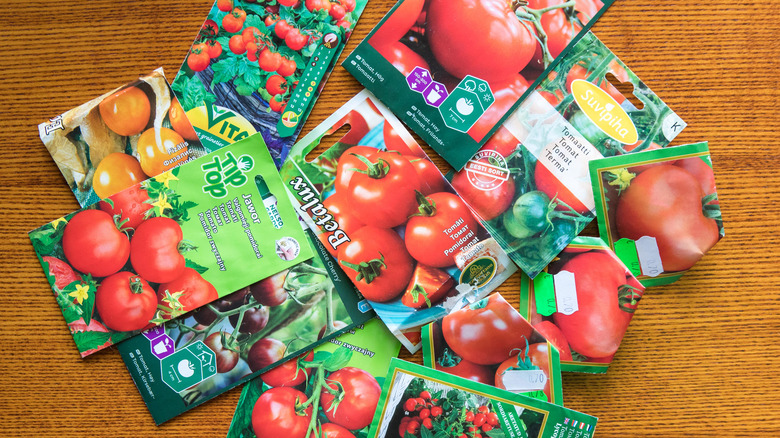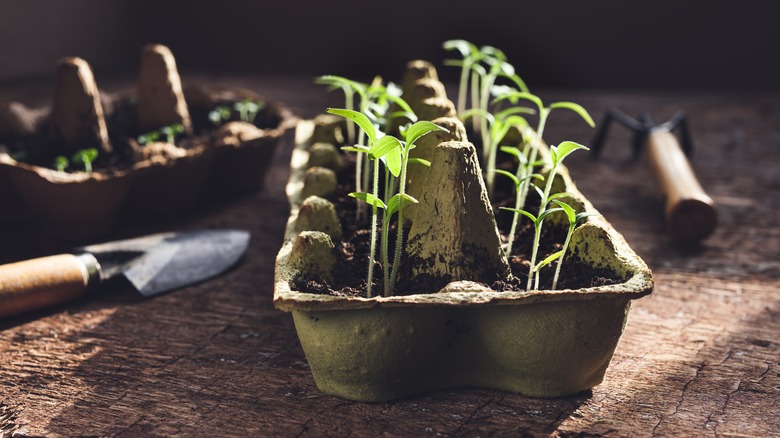The Common Household Throwaway You Can Reuse To Easily Plant Tomato Seeds
Tomatoes and other warm-season vegetables like peppers, broccoli, and eggplant belong to a list of seeds you should start indoors in many areas of the country. Doing so is not only essential in places with shorter growing seasons, but it also gives the plants the head start they need to thrive and produce in a timely manner. But before you buy growing trays from the store to start your tomato plants, take a look in your refrigerator because you probably have what you need behind that door — an egg carton. In fact, you can repurpose old egg cartons for many DIY hacks around your home. But for planting, this common household throwaway has little cubbies already built in, giving each tomato seed its own individual bed in which to grow.
To begin this project, gather your plastic or cardboard egg carton, potting soil, and tomato seeds. Note the calendar and weather as well, as you want to sow your seeds about six to eight weeks before the forecasted last frost of the season. Once you're in the proper timeframe for your area, it's time to begin.
From sowing to planting
When the time is right, grab your egg carton and carefully cut off the lid. Fill each cup with potting soil and add your seeds to the depth listed on your tomato seed packet. Next, spray the soil thoroughly with water so that it's wet but not soaking, and place your egg carton in the sun. Keep the dirt moist by misting when necessary until your tiny tomato plants pop up.
You also have the option of creating a greenhouse effect by covering the carton with plastic wrap, trapping humidity and moisture inside. That said, you still want to place it in a sunny location. Put some holes in the wrap to allow for airflow. If you go this route, be sure to add supports inside to elevate the plastic wrap and prevent it from restricting the sprouts, or remove the plastic wrap altogether at that point.
Once the tomato plants are about two inches high with true leaves, move them to larger pots until they're ready for the garden. Use a spoon to carefully remove the sprout and dirt from each cup to transplant to its larger temporary home. When you're done with the carton, you can either recycle or composite it (if it's paper ) or clean and repurpose it again (if it is plastic). Another idea, if you do have the cardboard variety, is to break the carton down to create a lovely DIY flower pot.

